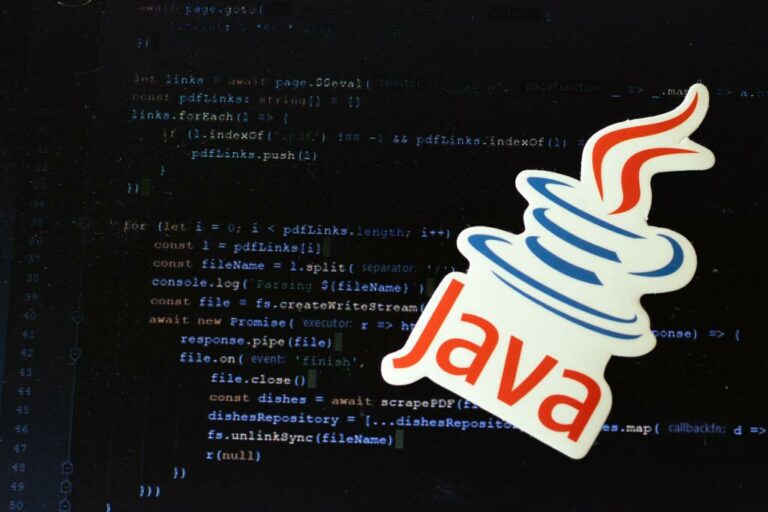If a sequence of events is both growing or reducing, we are able to define the restrict of the sequence in a means that seems to be quite natural. Note that these are the usual definitions of increasing and lowering, relative to the strange whole order \( \le \) on the index set \( \N_+ \) and the subset partial order \( \subseteq \) on the collection of occasions. The terminology is also justified by the corresponding indicator variables. This is the type of stochastic convergence that is most just like pointwise convergence known from elementary real analysis.
In the Soviet mathematical literature (and in the principle article above), distribution capabilities are normally left steady, whereas within the West they are proper continuous. The equivalence between these two definitions may be seen as a specific case of the Monge-Kantorovich duality. From the 2 definitions above, it is clear that the total variation distance between chance measures is always between 0 and a pair of. Much stronger theorems on this respect, which require not far more than pointwise convergence, can be obtained if one abandons the Riemann integral and makes use of the Lebesgue integral as a substitute. Otherwise, convergence in measure can refer to either world convergence in measure or native convergence in measure, relying on the writer.
This is why the concept of sure convergence of random variables is very hardly ever used. Convergence, in arithmetic, property (exhibited by sure infinite collection and functions) of approaching a limit increasingly more carefully as an argument (variable) of the operate increases or decreases or as the number of phrases of the sequence will increase. Generally speaking, a function is steady if it preserves limits.
Arithmetic > Useful Analysis
Cauchyness. If \(X_n \to X\) as \(n \to \infty\) with probability 1 then \(X_n \to X\) as \(n \to \infty\) in likelihood. Suppose that \(A\) is an event in a primary random experiment with \(\P(A) \gt 0\). In the compound experiment that consists of impartial replications of the fundamental experiment, the event \(A\) happens infinitely often has chance 1. The second lemma provides a condition that’s sufficient to conclude that infinitely many impartial occasions happen with chance 1.

Other types of convergence are essential in different helpful theorems, together with the central limit theorem. At the identical time, the case of a deterministic X can not, each time the deterministic value is a discontinuity point (not isolated), be dealt with by convergence in distribution, the place discontinuity factors need to be explicitly excluded. If the sequence converges, then any subsequence of it converges to the same restrict. It now follows that the sequence you suggest can never converge beneath any metric on $\mathbb R$.
Recall that metrics \( d \) and \( e \) on \( S \) are equal in the occasion that they generate the identical topology on \( S \). Recall also that convergence of a sequence is a topological property. So for our random variables as defined above, it follows that \( X_n \to X \) as \( n \to \infty \) with likelihood 1 relative to \( d \) if and only if \( X_n \to X \) as \( n \to \infty \) with likelihood 1 relative to \( e \). This is the notion of pointwise convergence of a sequence of features extended to a sequence of random variables. Then as n tends to infinity, Xn converges in likelihood (see below) to the widespread mean, μ, of the random variables Yi.
Thus, the next results are the continuity theorems of chance. Part (a) is the continuity theorem for increasing occasions and part (b) the continuity theorem for decreasing occasions. Where Ω is the pattern area of the underlying likelihood space over which the random variables are outlined. In a measure theoretical or probabilistic context setwise convergence is often referred to as strong convergence (as against weak convergence).
Convergence In Euclidean Area
We will quickly see that many of theorems relating to limits of sequences of real numbers are analogous to limits of sequences of components from metric areas. In arithmetic and statistics, weak convergence is considered one of many kinds of convergence referring to the convergence of measures. It is dependent upon a topology on the underlying house and thus is not a purely measure theoretic notion. Sure convergence of a random variable implies all the opposite sorts of convergence acknowledged above, however there isn’t any payoff in likelihood principle through the use of positive convergence in comparability with using almost certain convergence. The distinction between the 2 solely exists on sets with chance zero.
- Suppose that \(A\) is an occasion in a basic random experiment with \(\P(A) \gt 0\).
- The second lemma offers a situation that is adequate to conclude that infinitely many impartial events occur with likelihood 1.
- This is why the concept of sure convergence of random variables is very rarely used.
- Because this topology is generated by a household of pseudometrics, it’s uniformizable.
- However, convergence in distribution is very incessantly used in follow; most frequently it arises from utility of the central restrict theorem.
Given any alternating sequences (or extra typically, any sequence that accommodates two distinct constant subsequences), then beneath no metric on the ambient set will the sequence converge. We first outline uniform convergence for real-valued functions, although the concept is quickly generalized to capabilities mapping to metric areas and, more typically, uniform areas (see below). The following exercise offers a easy instance of a sequence of random variables that converge in likelihood but not with likelihood 1. Using Morera’s Theorem, one can present that if a sequence of analytic capabilities converges uniformly in a region S of the complicated airplane, then the limit is analytic in S. This example demonstrates that complex capabilities are more well-behaved than actual functions, because the uniform restrict of analytic features on an actual interval need not even be differentiable (see Weierstrass function). More precisely, this theorem states that the uniform restrict of uniformly continuous functions is uniformly steady; for a locally compact space, continuity is equivalent to native uniform continuity, and thus the uniform restrict of steady functions is steady.
Most Necessary Properties Of The Lévy Metric
For instance, an estimator is called consistent if it converges in likelihood to the amount being estimated. Convergence in likelihood can be the type of convergence established by the weak regulation of huge numbers. To formalize this requires a careful https://www.globalcloudteam.com/ specification of the set of capabilities into account and how uniform the convergence must be. Almost uniform convergence implies almost in all places convergence and convergence in measure.
Our subsequent discussion issues two ways in which a sequence of random variables defined for our experiment can converge. These are essentially necessary concepts, since a number of the deepest results in chance principle are limit theorems involving random variables. The most essential special case is when the random variables are real valued, but the proofs are basically the identical for variables with values in a metric area, so we are going to use the extra basic setting.

This theorem is a vital one within the history of actual and Fourier analysis, since many 18th century mathematicians had the intuitive understanding that a sequence of continuous functions all the time converges to a steady function. The picture above reveals a counterexample, and a lot of discontinuous features might, actually, be written as a Fourier collection of continuous functions. The faulty declare that the pointwise restrict of a sequence of continuous functions is continuous (originally acknowledged in terms of convergent series of continuous functions) is infamously often recognized as “Cauchy’s incorrect theorem”. The uniform restrict theorem reveals that a stronger form of convergence, uniform convergence, is needed to make sure the preservation of continuity within the restrict operate. Note that simply about uniform convergence of a sequence doesn’t imply that the sequence converges uniformly nearly in all places as might be inferred from the name. However, Egorov’s theorem does assure that on a finite measure house, a sequence of functions that converges virtually everywhere also converges almost uniformly on the same set.
Exponential Function
This can result in some ambiguity because in functional analysis, robust convergence often refers to convergence with respect to a norm. Here the supremum is taken over f ranging over the set of all measurable functions from X to [−1, 1]. In the case the place X is a Polish space, the entire variation metric coincides with the Radon metric. The phrase in likelihood sounds superficially like the phrase with probability 1. However, as we will quickly see, convergence in probability is way weaker than convergence with likelihood 1. Indeed, convergence with probability 1 is often referred to as sturdy convergence, while convergence in likelihood is commonly referred to as weak convergence.
The subsequent result reveals that the countable additivity axiom for a likelihood measure is equivalent to finite additivity and the continuity property for rising occasions. Since the model new sequences defined in the convergence metric previous outcomes are decreasing and growing, respectively, we will take their limits. These are the limit superior and limit inferior, respectively, of the unique sequence.
Convergence in distribution is the weakest form of convergence sometimes mentioned, since it is implied by all different types of convergence mentioned on this article. However, convergence in distribution may be very frequently utilized in follow; most often it arises from software of the central limit theorem. With this mode of convergence, we increasingly expect to see the following outcome in a sequence of random experiments changing into better and higher modeled by a given probability distribution. A set is closed when it incorporates the boundaries of its convergent sequences. The continuity theorems may be utilized to the growing and reducing sequences that we constructed earlier from an arbitrary sequence of occasions. Once again, the terminology and notation are clarified by the corresponding indicator variables.
When we take a closure of a set \(A\), we really throw in precisely these points which may be limits of sequences in \(A\). The topology, that’s, the set of open sets of a space encodes which sequences converge. The notion of a sequence in a metric area is very comparable to a sequence of actual numbers. There are a few mathematicians who reject the countable additivity axiom of likelihood measure in favor of the weaker finite additivity axiom. Whatever the philosophical arguments may be, life is definitely a lot tougher with out the continuity theorems.
Three of the commonest notions of convergence are described under.












